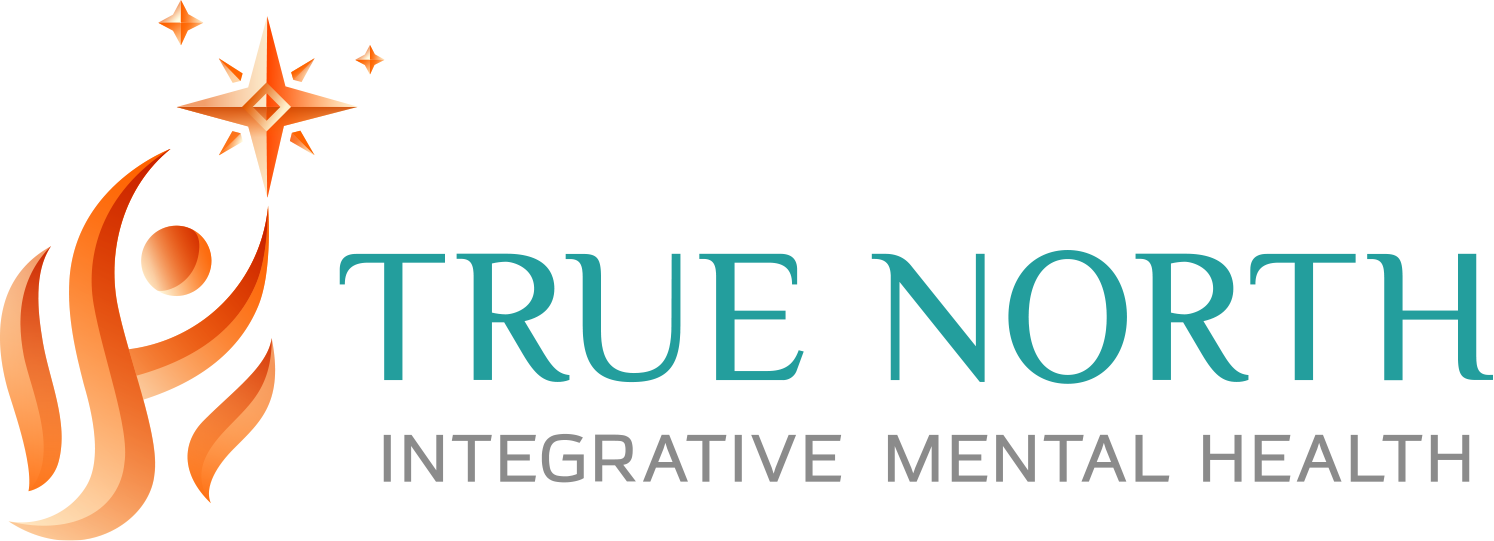Understanding TMS Fatigue and Other Side Effects of Transcranial Magnetic Stimulation
Dr. Jamie Rogers • October 30, 2025
If you've recently started Transcranial Magnetic Stimulation (TMS) therapy, you might have heard about something called TMS fatigue. TMS fatigue is the post-session tiredness or mental fog that can sneak up on you after treatment. But don't worry. It's more common than you may think, and it's usually nothing to be concerned about.
TMS is a non-invasive, FDA-approved therapy that uses gentle magnetic pulses to stimulate specific areas of the brain involved in mood regulation. Some people notice mild fatigue after TMS, while others feel perfectly energized. In most cases, this temporary tiredness is simply a sign that your brain is adjusting and responding to treatment.
In this guide, we'll explore what causes TMS fatigue, the typical side effects of TMS, and how you can manage them to feel your best throughout your treatment.
What Is TMS and How Does It Work?
Transcranial Magnetic Stimulation works by gently activating the parts of your brain responsible for mood and emotional regulation.
During treatment, an electromagnetic coil is placed against your scalp, usually near the forehead, where it sends quick, painless magnetic pulses to stimulate nerve cells. These pulses help "wake up" areas of the brain that may be underactive in people with depression, promoting healthier communication between neural pathways.
Each session typically lasts about 30 to 60 minutes, and most patients complete their therapy over several weeks. Because TMS doesn't have any sedative effects, there is no need for anesthesia, and you can go about your day right after treatment.
Occasionally, TMS fatigue sets in as your brain adjusts to this increased activity, much like the mental tiredness you feel after a long study session or a good workout.
A Brief History and FDA Approval of TMS
The science behind TMS has roots that stretch back more than a century. In the late 18th century, researchers first began exploring how electricity could influence the body and brain.
In the 1800s, direct brain stimulation first emerged and eventually led to the creation of electroconvulsive therapy by Cerletti and Bini in the 1930s. Though ECT was initially celebrated as a revolutionary treatment for mental health conditions, its excessive and often improper use caused its reputation to decline by the 1970s.
Fast forward to 1980, when Merton and Morton developed transcranial electrical stimulation (TES), but the procedure often caused discomfort for patients. This led British scientist Anthony Barker to create the first modern TMS device, opening a new chapter in neuroscience and mental health care.
After decades of research, the
FDA officially approved TMS
in 2008 for treatment-resistant depression, with later approvals for OCD and migraines. Since then, countless clinical studies have confirmed what early researchers hoped: TMS is both safe and remarkably effective.
Why TMS May Be Safer Than Traditional Depression Treatments
When compared to traditional depression treatments, TMS stands out for its safety. Unlike antidepressants, which affect the entire body and can cause issues like weight gain or sexual side effects, TMS works only on specific regions of the brain.
And unlike electroconvulsive therapy, it requires no anesthesia, no hospital stay, and no recovery time. It's non-invasive, targeted, and entirely drug-free.
While some patients notice mild side effects, such as temporary TMS fatigue or slight scalp discomfort, these are far gentler than those linked to medication. Most people leave their sessions feeling clear-headed and can immediately return to work, errands, or anything else their day has in store.

Common Side Effects of TMS
Like any form of therapy, TMS can come with a few side effects. But the good news is that they're almost always mild and temporary. Here are the most common ones and what to expect:
- Mild scalp discomfort or tenderness: You may feel slight pressure or sensitivity where the coil rests, but this typically eases within minutes after a session.
- Headaches or tension-type pain: Some patients experience mild headaches early on, similar to muscle tension, which can be relieved with over-the-counter pain medication.
- Facial tingling or twitching: Small, brief twitches in the face or jaw are common and harmless responses to the magnetic pulses.
- Temporary sleep changes: Your sleep patterns may shift slightly at first, but tend to normalize as treatment continues.
- TMS fatigue or brief mental tiredness: Feeling mentally drained after a session can happen as your brain adapts to increased activity. It's usually a good sign of progress.
Occasionally, patients experience a short "TMS dip," a temporary phase of worsened mood or fatigue that resolves as the brain rewires and begins to heal.
Common TMS Side Effects
Fatigue
Usually mild and temporary after treatment sessions.Scalp Tingling
Caused by brief magnetic pulses stimulating brain regions.Headache
Often subsides within the first few sessions.What Causes TMS Fatigue?
In most cases, TMS fatigue occurs simply because your brain is working overtime. As Transcranial Magnetic Stimulation increases activity in mood-related regions, your neurons begin firing more often and using more energy (much like your muscles do after a good workout). This can leave you feeling mentally tired or a bit foggy after sessions.
Other factors can contribute too, such as tension headaches or mild pain, not getting enough sleep or hydration, longer or more frequent sessions, or even the emotional release that comes with therapy.
The important thing to remember is that TMS fatigue isn't a red flag to worry about. It's usually a normal, temporary part of the brain's healing process, showing that new neural connections are forming and strengthening. But if you have concerns, always bring them up to your medical provider.
Rare but Serious Side Effects of TMS
While Transcranial Magnetic Stimulation is considered very safe, a few rare side effects are worth mentioning. The most serious, though extremely uncommon, is a seizure, which occurs in less than 0.1% of patients and is largely prevented through careful screening and safety measures.
Manic episodes may occur in individuals with bipolar disorder, which is why a complete psychiatric history is reviewed before treatment begins.
Occasionally, persistent headaches or hearing issues can develop if proper ear protection isn't used during sessions. Fortunately, clinics must follow strict protocols to minimize these risks, making serious complications from TMS exceptionally rare.
How to Minimize TMS Side Effects and Fatigue
While TMS fatigue and other mild side effects are common early in treatment, there's plenty you can do to feel your best throughout the process.
- Stay hydrated: Drink plenty of water before and after each session to help your brain and body recover more efficiently.
- Prioritize sleep: Aim for 7–8 hours of rest each night so your brain has time to recharge and process new neural activity. Sleep is when our bodies heal and recover.
- Practice relaxation or mindfulness: Deep breathing, meditation, or light stretching before your session can help reduce tension and anxiety.
- Eat balanced meals: Fuel your body with nutritious foods and avoid caffeine right before treatment to prevent jitters or restlessness.
- Communicate with your provider: If you experience discomfort or persistent fatigue, ask your clinician about adjusting the coil position or stimulation intensity.
- Incorporate light exercise: Gentle movement, like walking or yoga, promotes circulation and reduces sluggishness.
- Stick to a consistent routine: Regular sleep, meals, and relaxation habits help stabilize energy levels and ease TMS fatigue as your brain adapts to treatment.
When to Contact a Doctor About TMS Side Effects
Although TMS fatigue and other side effects are usually mild, it's important to know when to reach out for extra support. Contact your provider if you experience severe or persistent headaches, fatigue that lasts for several days, or noticeable mood changes like increased anxiety or thoughts of self-harm. You should also report any unusual physical sensations or signs of seizure activity, even if they seem minor.
Don't wait or try to push through. Early communication allows your clinician to make quick adjustments to guarantee your treatment stays comfortable and effective.
TMS Recovery in Progress
Temporary fatigue can indicate your brain’s healing response.
TMS, Medications, and Pregnancy: What to Know
TMS can safely be combined with antidepressant medications, and in fact, many patients continue their prescriptions during treatment. However, as symptoms improve, your doctor may adjust your dosage to keep everything in balance.
Sometimes, TMS fatigue can be influenced by medication interactions, so it's important to share all prescriptions, supplements, and over-the-counter medications with your provider.
Early studies also suggest that TMS is safe during pregnancy, since it's drug-free and non-systemic. These qualities make it a promising alternative for expectant mothers who wish to avoid medication.
As always, consult your healthcare provider to determine the best, most personalized approach for your mental wellness.
This is paragraph text. Click it or hit the Manage Text button to change the font, color, size, format, and more. To set up site-wide paragraph and title styles, go to Site Theme.
Find Help Managing TMS Fatigue in Greenville, North Carolina
In the end, TMS fatigue and other mild side effects are simply signs that your brain is working hard to heal, rewire, and restore balance. These sensations are temporary, and often an encouraging reminder that change is happening beneath the surface.
Transcranial Magnetic Stimulation remains one of the safest and most effective treatments for depression, as it helps people regain energy, focus, and emotional well-being without invasive procedures or medication. Stay consistent with your sessions, keep an open dialogue with your provider, and trust the process.
At True North IMH of Greenville, we're proud to be one of North Carolina's leading TMS clinics. Our experienced team provides care in a calm, comfortable setting equipped with advanced, state-of-the-art technology. Many insurance plans include coverage for TMS, helping make this effective treatment more affordable and accessible for our patients.
If you're ready to explore how TMS can help relieve depression or how our team can help you overcome TMS fatigue,
reach out to us today.
Cited Sources
- Magavi S, et al. Efficacy and safety of transcranial magnetic stimulation in major depressive disorder: A systematic review and meta-analysis.
Front Psychiatry. 2024; PMC11202063. - Rossi S, et al. Safety, ethical considerations, and application guidelines for the use of transcranial magnetic stimulation in clinical practice and research.
Clin Neurophysiol. 2009; PMC3833074. - Lefaucheur JP, et al. Evidence-based guidelines on the therapeutic use of repetitive transcranial magnetic stimulation (rTMS).
Clin Neurophysiol. 2020; PMC7732158. - Caulfield KA, et al. Long-term outcomes of transcranial magnetic stimulation for depression: A follow-up study.
J Affect Disord. 2024; PMC11808189.

Our Helpful Links
Schedule a Consultation
Get help with depression today! It's important to know that you are not alone.


